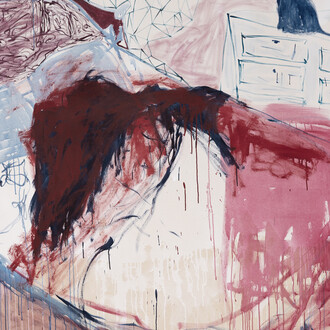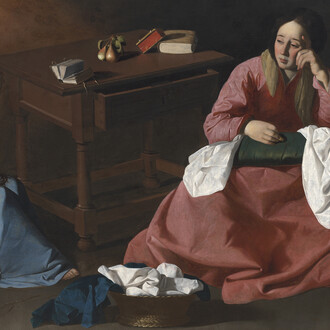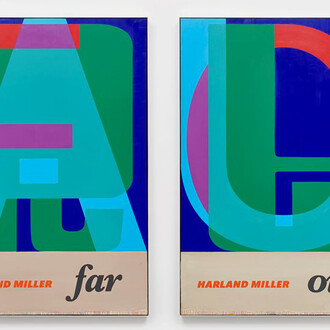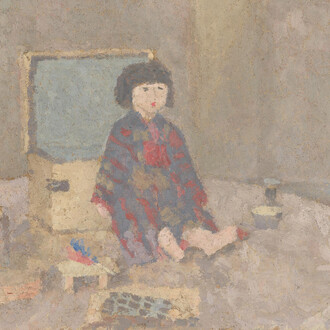Following the passing of the acclaimed artist Owusu-Ankomah in February of this year, October Gallery presents an exhibition of selected core works from 2008 – 2014.
Owusu-Ankomah’s intriguing large-scale paintings on canvas depict an alternative world abounding with symbols and monumental human figures. Reflecting the artist’s own spiritual journey, the way in which these figures interact with the surrounding symbols has developed through several distinct phases over time. When starting out, Owusu-Ankomah’s work drew largely on ancient African traditions of rock painting and masquerade, before his figures shed their masks and became mute actors afloat in an ocean of signs. Employing a studied trompe l’oeil effect, the powerful figures’ finely sculpted bodies are themselves covered in similarly painted glyphs. These cause the figures to melt into the background forest of signs, where the hidden figures move within a symbolic realm that surrounds, supports and inevitably defines them. Originally, the accompanying signs were all derived from the adinkra symbol set embodying the traditional wisdom of the Akan people of Owusu-Ankomah’s native Ghana. However, over time symbols from other sources and diverse cultures have also been added, including many novel glyphs devised by the artist himself.
Even as he mined adinkra signs for their links to inherited African values, Owusu-Ankomah realised that the hybrid symbols he created could be used to explore more contemporary concerns. We can identify innovative glyphs based on fractals, crop circles, snowflakes and specific symbols referring to other bodies of esoteric knowledge, Mathematics, Astronomy, even sub-atomic Physics. Finally, the artist’s contemplative enquiries into the nature of reality itself began to cohere around the concept of the microcron—visually represented as a circle of shining orbs—that gradually became the central theme of his mature canvases. Much of these later canvases dramatise the gradual apprehension of this unique symbol by the Michelangelesque and Rodin-like sculpted figures portrayed. He would later describe the microcron as the “symbol of symbols,” a meta-symbol that alludes directly to the notion that, in a kind of symbolic projection, mankind invents the reality he believes he inhabits. If this is true, then, as a species, humanity must create positive symbols to enable us to move forward freely and in harmony together.
Owusu-Ankomah writes: For me, these paintings are all about the power of freedom: freedom of movement, freedom of self-expression, both as individuals and societies. I compose my paintings using the expressive power of the symbols themselves, taking full account of their deeper meanings, ensuring both visual and conceptual harmonies exist between the forms and the overall themes explored on each canvas.
The seemingly simple black and white canvases presented in Freedom rising deepen to communicate Owusu-Ankomah’s musings about the wonders and complexities of life in this mysterious dimension that we all inhabit together.
















